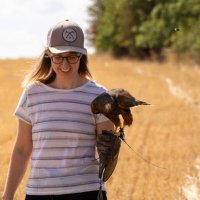
Dimitri Fabrèges
@dimitrifabreges
Developmental biologist in love with randomness • Making science more accessible is always a good idea • Currently in Takashi Hiiragi's group.
ID: 1106840440660217857
16-03-2019 08:51:39
77 Tweet
154 Followers
114 Following



We've been interested in this question forever: why are girls born with so many (sometimes more than a million) primordial ovarian follicles? A new paper in press in Biology of Reproduction with Dr. Sean Lawley (U of Utah) provides some new insights: academic.oup.com/biolreprod/adv…

Exciting news! Our paper on how directional reversal affects pattern formation of active filaments is out now in Physical Review Research . Check it out for more information! journals.aps.org/prresearch/abs…. Special thanks to Ali Malek, Stefan Karpitschka and Stefan Klumpp Max Planck School Matter to Life

Spatial epigenome+transcriptome co-profiling technologies published nature today! Now we are able to see the gene regulatory network in the tissue context. Looking forward to more spatial technologies development in my lab Penn Path & Lab Medicine and Penn Epigenetics nature.com/articles/s4158…






New insights from the Hiiragi group show that the variability in how and when cells divide during embryonic development isn't an obstacle. Contrary to what scientists traditionally believed, this variability promotes healthy development. Dimitri Fabrèges hubrecht.eu/variability-ce…

A new paper by Edouard Hannezo ISTAustria, Bernat Corominas-Murtra Uni Graz/University of Graz, Takashi Hiiragi and Dimitri Fabrèges Hubrecht Institute and more, published in Science Magazine, sheds light on the complex process of mammalian embryo development.



Super happy to see this heroic effort by Dimitri Fabrèges and Bernat Corominas out! Via a quantitative atlas of the developmental trajectories of dozens of embryos, we can see how robust shapes and fates arise from highly stochastic cellular processes! science.org/doi/10.1126/sc… 1/n




